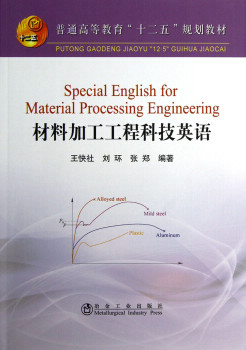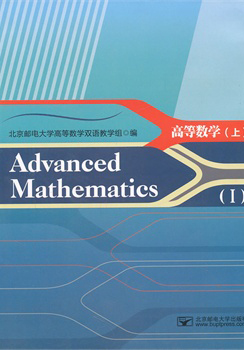Resonant Sensors谐振式传感器
作者: 樊尚春
出版时间:2014年4月
出版社:北京航空航天大学出版社
- 北京航空航天大学出版社
- 9787512415041
- 1-1
- 153422
- 0047155367-7
- 平装
- 16开
- 2014年4月
- 448
- 320
- TP212
- 仪器科学与技术
- 研究生
It can be selected as reference to the masters, undergraduates and pertinent engineering staffs whose research direction are instrumentation science and technology, control science and engineering, mechanical engineering etc.
Chapter 1 Fundamental Theory of Resonant Sensors
1. Introduction
1.2 Resonance Phenomenon
1.3 Basic Structure of the Resonator Sensors
1.4 Sensitive Mechanism of the Resonator Sensors
1.5 The Closed-Ioop System of the Resonator Sensors
1.5.1 Time-domain Analysis
1.5.2 Complex Frequency Domain Analysis
1.6 Mechanical Quality Factor of the Resonant Sensitive Elements
1.6.1 Definition and Calculation
1.6.2 The Analysis of the Affecting Factors of Sensors
1.6.3 Methods on Improving the Mechanical Quality Factor
1.7 Methods of Measurement of the Frequency Output Resonator Sensors
1.7.1 Frequency Method
1.7.2 Periodic Method
1.8 The Design Features of the Resonator Sensors
1.9 The Characteristics and Advantages of the Resonator Sensors
Questions and Exercises
Chapter 2 Resonant Pressure Sensor
2.1 Vibrating String Type Pressure Sensor
2.1.1 Structure and Principle
2.1.2 Characteristic Equation
2.1.3 Excitation Mode
2.2 Resonant Diaphragm Pressure Sensor
2.2.1 Structure and Principle
2.2.2 Characteristic Equation
2.3 Electromagic Excitation Vibrating Cylinder Pressure Sensor
2.3.1 Structure and Principle
2.3.2 Characteristic Equation
2.3.3 Excitation Mode
2.3.4 Characteristics Linearization and Error Compensation
2.4 Piezoelectric Exciting Resonant Cylinder Pressure Sensor
2.4.1 Structure and Principle
2.4.2 Characteristics of Piezoelectric Excitation
2.4.3 Transformation of Picking-up Signals
2.4.4 The Realization of a Stable Single Modal Self-exciting System
2.4.5 Related Problems about Double Modal
2.5 Quartz Vibration Beam Pressure Sensor
2.5.1 Structure and Principle
2.5.2 Characteristic Function
2.6 Micromechanical Silicon Resonant Pressure Sensor
2.6.1 Sensing Structure and Mathematical Model
2.6.2 The Process of Signal Transformation
2.6.3 The Temperature Field Model and Thermal Characteristic Analysis of the Beam Resonator
2.7 Micro Mechanical Silicon Resonant Pressure Sensor with Differential Output
2.7.1 Sensing Structure and Working Mechanism
2.7.2 Characteristic Equation Questions and Exercises
Chapter 3 Resonant Inertial Sensor
3. Introduction
3.2 Quartz Vibrating Beam Acceleration Sensor
3.3 Resonant Silicon Micromachined Acceleration Sensor
3.4 Piezoelectric Excitation Resonant Cylindrical Shell Angular Rate Sensor
3.5 Static Exciting Hemispherical Resonant Angular Velocity Sensor
3.6 Micro Silicon Resonant Angular Velocity Sensor
3.6.1 Silicon Capacitive Surface Micromechanical Gyroscope
3.6.2 Silicon Micromechanical Gyroscope with Direct Frequency Output Questions and Exercises
Chapter 4 Resonant Mass Flow Sensor
4.1 Introduction
4.2 The Basic Working Principle
4.3 Mathematical Model of the Measurement
4.3.1 The Measurement of Mass Flow
4.3.2 Density Measurement
4.3.3 The Measurement of the Two-component Fluid
4.4 Signal Detection Scheme and Its Realization
4.4.1 Phase Difference Detection of the Mass Flow
4.4.2 The Amplitude Ratio Detection of the Mass Flow
4.4.3 Density Detection
4.5 The Implementations of Coriolis Mass Flow Sensor
4.6 The Classification of Coriolis Mass Flow Sensor
4.6.1 The Classification According to the Shape of the Measuring Tube
4.6.2 Classified According to the Number of Segments of the Measuring Tube
4, 6.3 Classified According to the Connection of the Measuring Tube with
the Double Tube Mode
4.6.4 Classified According to the Layout of the Flowing Direction of
the Measuring Tube
4, 7 Main Application Fields and its Characteristics
4.7.1 Application Overview
4.7.2 Advantages
4.7.3 Disadvantages
4.8 Interference Factors and Their Restraining
4.8.1 Pressure Loss
4.8.2 Measuring the Flow of Gas
4.8.3 Liquid Containing Gas
4.8.4 Liquid Containing Solid
4.8.5 The Influence of the Parameters of Fluid Conditions or Physical
Properties to the Fluid Measu









